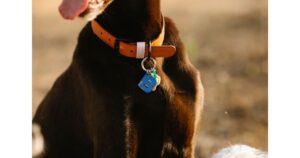Are GPS Dog Fences Effective? It is a question asked by new dog owners or owners who now want to have some fencing in place as their puppies have grown up. In an age where technology continues to revolutionize our lives, pet owners are not left behind.
One innovation that has gained increasing popularity among dog owners is the GPS dog fence. It provides a secure and convenient way to contain our furry friends,
In this article, we will explore the world of GPS dog fences, discussing how they work, their effectiveness in containing dogs, safety concerns, training requirements, maintenance, legal considerations, alternatives, and much more. By the end of this journey, you’ll have a clearer picture of are GPS dog fences effective.

Understanding GPS Dog Fences
Table of Contents
ToggleGPS dog fence systems are also referred to as wireless fences, as they can create invisible boundaries for a dog. They are relatively easy to set up and manage. They consist of two major components: a transmitter and a receiver.
The transmitter, typically placed inside your home, communicates with the dog’s receiver collar via GPS signals. It allows you to establish virtual boundaries, you want your dog to stay within. When your dog approaches these boundaries, the receiver collar emits a warning signal or a mild static correction, depending on the system’s settings and your preferences.
Are GPS Dog Fences Effective in Containing Dogs? System Concerns.
Yes, this system is quite effective in containing dogs within a specific boundary, however, it involves taking certain steps. These parameters should be reviewed regularly, either at the time of setting up the system or if one is already in place. Here are different aspects of maintaining effectiveness in containing dogs a glance detailed overview:
- Regular Inspection and Maintenance:
- Visual Checks: Regularly inspect the boundary and the containment system components. Look for any signs of wear and tear, damage, or loose connections.
- Testing: Test the system periodically to ensure that it’s functioning correctly. Verify that the warning signals and corrections are working as intended.
- Battery Management:
- Receiver Collar Batteries: If you’re using a GPS dog fence with a receiver collar that requires batteries, monitor the battery life closely. Replace the batteries as recommended, by the manufacturer to avoid system failure.
- Transmitter Batteries: In some systems, the transmitter may also require batteries. Ensure they are replaced as needed to maintain signal strength.
- Boundary Adjustments:
- Changing Boundaries: Over time, you may need to adjust the boundaries of your containment system. This could be due to landscaping changes or your dog’s evolving understanding of the boundaries.
- In this situation, refer to the manufacturer brochure and review all the related guidelines.
- Supervision:
- Regular Supervision: Even with a containment system in place, it’s essential to supervise your dog when they are outside. This is especially important for young dogs, newly trained dogs, or dogs prone to testing boundaries.
- If you see your dog approaching the boundary, be prepared to intervene and redirect them if they ignore the warning signals.
- Weather Considerations:
- Seasonal Changes: Be aware of how seasonal changes can affect your containment system. Snow, heavy rain, or leaves on the ground can potentially disrupt the system’s functionality.
- In colder climates, ensure that the system components are adequately protected from freezing temperatures.
- Regularly Update System Software and Firmware:
- If you’re using a high-tech containment system, it may receive software or firmware updates from the manufacturer. Stay informed about updates and ensure your system is running the latest version for optimal performance.
- Maintain a Safe and Comfortable Environment:
- Ensure that your dog has access to shelter, water, and comfortable resting areas within the containment area. A comfortable and secure environment helps reduce any stress associated with containment.
- Monitor Your Dog’s Behavior:
- Pay attention to changes in your dog’s behavior that might indicate discomfort or stress related to the containment system. If you notice unusual behavior, consult with a veterinarian or dog behaviorist.
- Compliance with Local Regulations:
- Stay informed about local laws and regulations regarding dog containment systems. Compliance is essential in avoiding legal issues and penalties.
- Professional Guidance:
- If you encounter persistent issues or have concerns about the system’s effectiveness, consult with a professional dog trainer or behaviorist. They can provide guidance and make adjustments as needed.
- Regularly Educate Yourself:
- Stay up-to-date with the latest information, technologies, and best practices related to dog containment. This ongoing education can help you make informed decisions about your containment system’s maintenance and effectiveness.
- Emergency Preparedness:
- Have a plan in place for emergencies, such as power outages or system failures. Know how to safely and quickly remove your dog from the containment area if needed.
Are GPS Dog Fences Effective? Safety Concerns
Using a GPS dog fence can provide both convenience and security for pet owners, but it’s essential to be aware of potential safety concerns associated with these systems. Understanding these concerns and taking appropriate precautions is crucial for the well-being of your dog. Here are some safety concerns to consider:
- Static Corrections and Discomfort:
- Issue: Many GPS dog fences use static corrections (a mild electric shock) as a deterrent when the dog approaches the boundary. Although they are safe and not harmful, some dogs may find them uncomfortable.
- Precaution: Monitor your dog’s reaction to static corrections during training. If your dog appears excessively stressed or fearful, consider alternative containment methods or seek guidance from a professional dog trainer who specializes in positive reinforcement techniques.
- Escaping Intruders:
- Issue: GPS dog fences are designed to keep your dog within a designated area but do not prevent other animals or individuals from entering the containment zone. This can potentially expose your dog to unfamiliar animals, which could lead to confrontations or attacks.
- Precaution: Supervise your dog when they are outside, especially if there is a possibility of other animals entering your property. Ensure that your dog is protected and safe from potential intruders.
- Collar Fit and Comfort:
- Issue: The receiver collar must fit properly and comfortably for the system to work effectively. An ill-fitting or uncomfortable collar can cause discomfort and potential skin issues for your dog.
- Precaution: Ensure that the collar is appropriately fitted to your dog’s size and breed. Check for any signs of irritation or discomfort on your dog’s neck and adjust the collar accordingly.
- Power Outages or Malfunctions:
- Issue: GPS dog fences rely on electricity and technology. Power outages or system malfunctions can render the fence ineffective, allowing your dog to breach the boundaries.
- Precaution: Have a backup plan in case of power outages or system failures. This might include a traditional leash, harness, or crate for your dog.
Are GPS Dog Fences Effective? Training and Adaptation
Training is a pivotal aspect of ensuring the effectiveness of a GPS dog fence. Here are some important considerations:
- Consistency: Consistency in training is key. Establish clear boundaries and consistently reinforce them during training sessions.
- Positive Reinforcement: Many experts recommend using positive reinforcement techniques, such as treats and praise, to reward your dog when it stays within the designated boundaries.
- Supervision: During the initial stages of training, it’s crucial to supervise your dog while they wear the receiver collar. This allows you to intervene if they approach the boundary.

Legal Considerations
Before installing a GPS dog fence, it’s essential to research and understand any legal restrictions or regulations in your area. Regulations regarding dog containment systems can vary from one locality to another, and non-compliance results in fines or other penalties.
Are GPS Dog Fences Effective? Alternatives to GPS Dog Fences
While GPS dog fences have their advantages, they are not the only option for containing your dog. Consider these alternatives:
- Traditional Fences: Physical fences made of wood, vinyl, or metal offer a visible and robust barrier that can be highly effective. They are effective in maintaining your furry friends in a well-defined boundary. They are long-lasting and durable in harsh weather.
- Electric Fences: Traditional electric fences use buried wires to create a boundary. They deliver a shock when the dog crosses the boundary.
Conclusion
In conclusion, GPS dog fences offer a modern and convenient solution for dog containment. Their effectiveness depends on factors such as your dog’s size, breed, temperament, training, and maintenance. While they may not be suitable for every situation, they can be highly effective when used appropriately. It’s essential to weigh the benefits against the potential risks and consider alternatives before deciding. Ultimately, responsible pet ownership and the well-being of your furry friend should be your top priorities.







